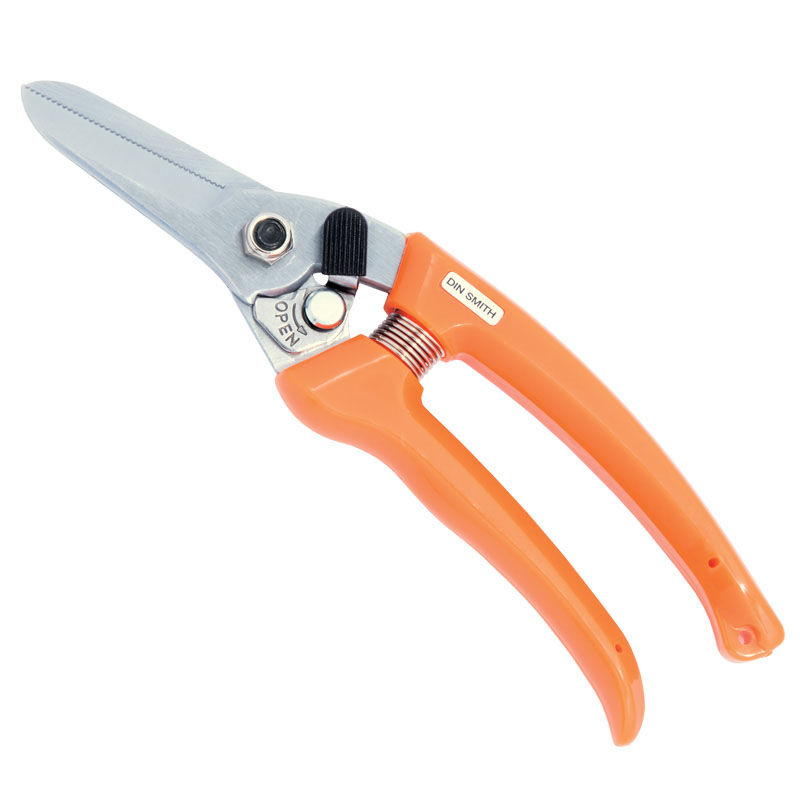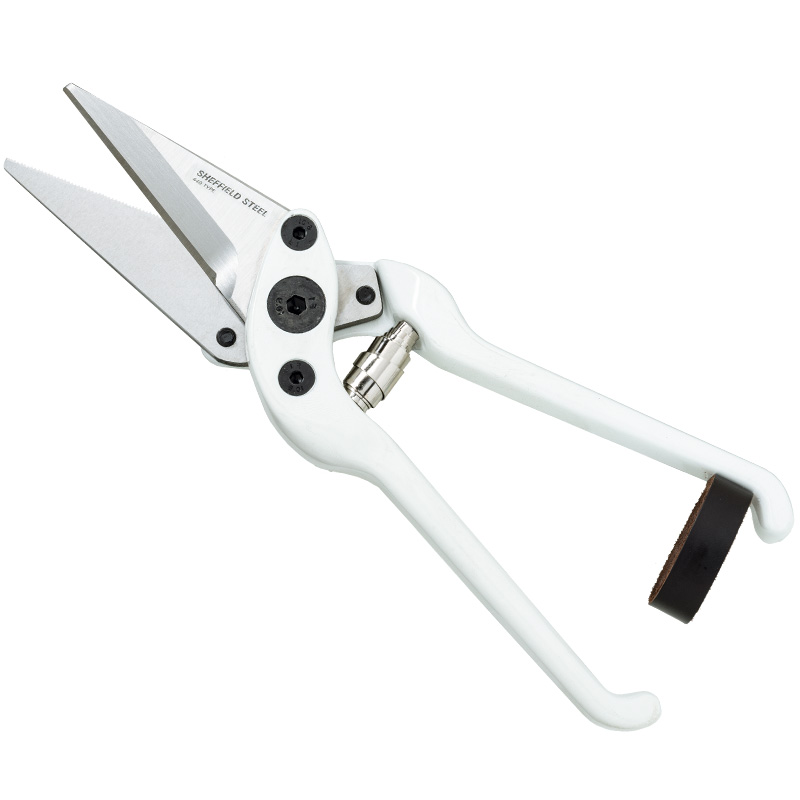Hoof Trimming and Foot Care for Sheep and Goats

Many choices—because hoof or foot trimming circumstances vary:
- Large hands?
- You may like The “Premier”™ or ARS Hoof Shears.
- Small hands?
- You may prefer the ARS 140DXR, or ExoTrim™.
- Most comfort?
- The ExoTrim and ARS trimmers are viewed by many as equally comfortable to use.
- Animals with very hard or thick hooves?
- Choose trimmers with serrated blades. Serrated blades “grip” hard hooves when cutting force is applied—eliminating slippage. The disadvantage? Serrated blades cannot be resharpened.
Hoof Trimmer Comparison Chart
| Tool Length | Blade Length | Serrated? | ||
|---|---|---|---|---|
| ExoTrim™ | 7.5" | 2" | ✘ | ✔ |
| ARS 140DXR | 7.5" | 1.75" | ✔ | ✔ |
| ARS Hoof Shears | 8" | 2.25" | ✔ | ✘ |
| The “Premier” | 9.25" | 3" | ✘ | ✔ |
Length—How to choose?
The shape and length of the handles help determine the hand strength required to squeeze the trimmer. Maximum leverage isn’t always desired; many shepherds prefer comfortable trimmers that fit their hands for all day use.
- Longer blades may reduce the # of overall cuts needed; blades longer than 2" can clear most hooves with one cut
- Shorter blades are better for precision work
-
 ExoTrim™Unbeatable value for a high-quality foot trimmer. Smooth, clean cutting action. Serrated blades are excellent for removing ear tags, too.
ExoTrim™Unbeatable value for a high-quality foot trimmer. Smooth, clean cutting action. Serrated blades are excellent for removing ear tags, too. -
 ARS 140DXRThe gold standard tool for paring goat and sheep hooves. Japanese steel blades hold their edge. Choice of smooth or serrated blades.
ARS 140DXRThe gold standard tool for paring goat and sheep hooves. Japanese steel blades hold their edge. Choice of smooth or serrated blades. -
 ARS Hoof ShearsSimilar to ARS 140DXR, but with longer blades (2.25" vs 1.75") for fewer cuts per hoof. Hardened center bolt prevents spreading.
ARS Hoof ShearsSimilar to ARS 140DXR, but with longer blades (2.25" vs 1.75") for fewer cuts per hoof. Hardened center bolt prevents spreading. -
 The “Premier”™Best hoof trimmer (in value, ability and quality) for large hands. Precision-ground fine serrations slice through hooves with minimal effort. Replacement blades available.
The “Premier”™Best hoof trimmer (in value, ability and quality) for large hands. Precision-ground fine serrations slice through hooves with minimal effort. Replacement blades available.
Shepherd’s Choice™ Management Tip
If a sheep seems to have difficulty or reluctance walking, check their feet.Sheep and goats hooves are made from the same hard and tough protein (keratin) that comprises human fingernails. Hooves will continue to grow throughout an animal’s life and must be routinely trimmed to prevent infection. Left unchecked, the hoof wall may begin to curl or grow irregularly, which can create painful walking conditions.
Premier’s Deck Chair or Trimming Stand can be used to restrain the animal prior to trimming. Be sure to clean out accumulated dirt and debris that may be caught in their feet.
Always disinfect trimmers between animals to prevent spreading diseases.
For treating scald and footrot…
Footrot is a highly infectious disease that can affect ruminants (e.g. sheep, goats and cattle.) It’s caused by a bacterial infection and typically occurs in periods of warm, wet weather. In addition to humid conditions, overgrown hooves can also make footrot infections more likely. It is a common cause of lameness and may result in serious economic loss. Once present in a herd/flock, footrot can be very difficult to control.
Zinc Sulphate vs. Copper Sulphate vs. Formaldehyde?
- Zinc Sulphate (Premier FootCare or Hoof 1-2-3)—we rely on it in a Premier SureFoot™ Foot Bath for mass treating and preventing footrot and/or foot scald. But it takes longer exposure time (10 minutes) to “work” than other options.
- Copper Sulphate—effective and quick. Corrodes metal gates (and even the nails and screws in wooden gates). Thus we use it only for topical treatments like FootCure™.
- Formaldehyde—kills bacteria rapidly. Can make hooves brittle. Poses serious health risks to human and animal skin (particularly eye tissue).





